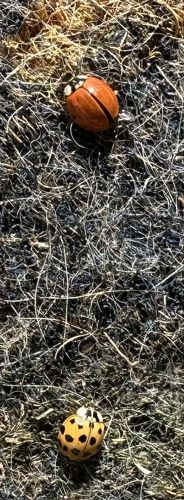Ladybug (or Ladybird beetle)
Scientific Name: Coccinellidae
Order & Family: Order Coleoptera, Family Coccinellidae
Size: Typically 1 to 10 mm (0.04 to 0.4 inches) in length.

Natural Habitat
Gardens, agricultural fields, meadows, forests, and other areas with abundant plant life and prey insects like aphids.
Diet & Feeding
Primarily carnivorous, feeding on soft-bodied insects like aphids, scale insects, mites, and whiteflies. Some species also consume pollen, nectar, or mildew.
Behavior Patterns
Ladybugs undergo complete metamorphosis (egg, larva, pupa, adult). They are known for their voracious appetites, especially in their larval stage. When threatened, they can exude a foul-smelling, yellowish fluid (reflex bleeding) to deter predators. Many species overwinter in large aggregations.
Risks & Benefits
Ladybugs are overwhelmingly beneficial to humans and ecosystems, serving as natural pest control agents in gardens and agriculture by preying on crop-damaging insects. Some invasive species, like Harmonia axyridis (Asian lady beetle), can sometimes become a nuisance by overwintering indoors in large numbers and may bite if startled (though not harmful to humans).
Identified on: 11/13/2025